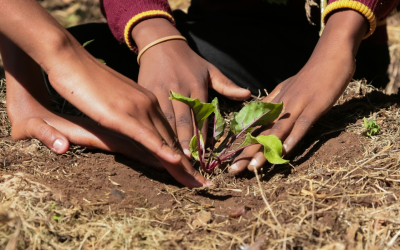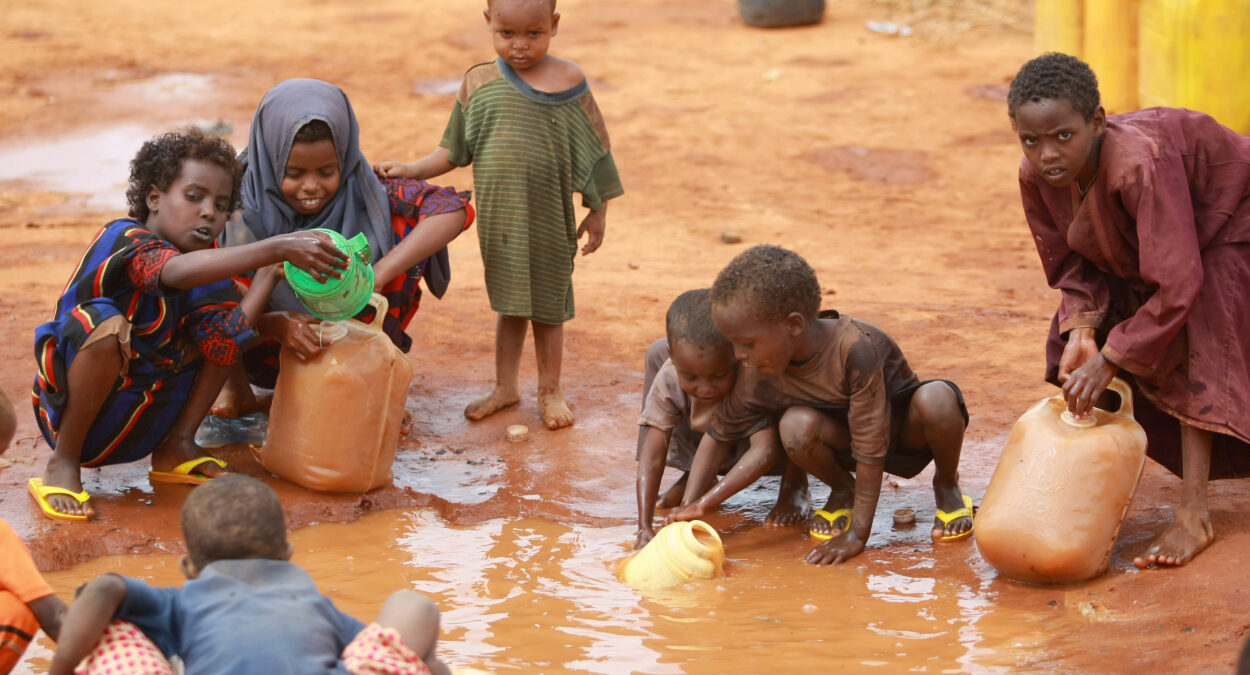CURRENT LIVING CONDITIONS IN TANZANIA
SCHOOL
Tanzania has had compulsory education for decades, which is considered to be linked to the principles of the former colonial power, Great Britain. Officially, all school-age children attend at least a seven-year primary school until the age of 15.
Since 2002, school fees have been abolished, which has led to an increase in class sizes, especially in rural areas. However, the school system is not entirely without financial contributions from parents. Officially, these funds may only be used for food, transport and school uniforms, but misappropriation of the funds is the order of the day. Better schooling is available – only against high school fees – at the country's private and international educational institutions.
In 2016, a literacy rate of almost two-thirds was still surveyed in the population aged 15 and over. More than 80% had successfully completed at least primary school. Tanzania has several universities and other institutions of higher education.
MEDICINE
Average life expectancy in Tanzania has increased dramatically since the 1960s from 43.6 to 65.5 years today. With an infant mortality rate of 53 per thousand and a maternal mortality rate of less than ten per thousand, the country ranks among the highest in sub-Saharan Africa. Nevertheless, judged by Western standards, healthcare in Tanzania is precarious.
A German doctor sees an average of 260 patients; in Tanzania, this number is over 30,000. Malaria is still a major health problem. It is the most common cause of death in children. AIDS is also present in Tanzania. Young women in particular are affected, who have hardly any chances of education and a qualified job, slip into prostitution and quickly become infected there. COVID-19 is also causing increasing trouble. President Magufuli ridiculed the protective measures of neighbouring countries and even warned the population against vaccination.
Water
Tanzania, like other developing countries in Africa, cannot yet offer the majority of its population sufficient access to clean drinking water. This seems paradoxical, because the country, surrounded by lakes and criss-crossed by large rivers, actually revels in abundance. However, it lacks the necessary infrastructure to distribute the water adequately. Nearly half of the rural population and still around a quarter of urban dwellers therefore have no clean and safe drinking water supply, with far-reaching consequences. Diarrhoea and cholera are rampant due to poor sewerage and insufficient fresh water inflow, and agriculture can hardly develop to its full potential due to lack of irrigation.Since the 1990s, however, the access rate to water has increased from 46% to 62% in 2006. Between 2000 and 2012, the Tanzanian national budget increased its spending on infrastructure fivefold. Further measures are planned until 2025. Together with donor countries, with substantial contribution by Germany, the government has developed a uniform strategy. There is hardly a lack of initiative, as ministries currently spend most of their time trying to reduce overlapping or duplication of the many projects. Thus, the goal of a sustainable, climate-neutral supply strategy that is accessible to all parts of the population is already within reach and, by African standards, certainly serves as a model.
nutrition
Thanks to Tanzania's positive economic development and the relatively low food shortage in the country, namely away from the drought and famine areas of Africa, the arguably existing food problem is receding year by year. Still deplorable, however, is the widespread poverty among the population, which in particular calls into question the supply of sufficient high-quality food on a daily basis. In the World Hunger Index, the country ranks 95th out of a total of 117 countries. Almost half of the people in Tanzania have to make a living with less than 1.90 US dollars per day.The food situation is still considered “serious”. Due to high poverty, the affordable food is just poor in nutrients. Traditionally, the rural population eats maize porridge and a few vegetables every day. This fills you up, but does not contain enough reserves, for example for pregnant women and adolescents. Nearly half a million children are malnourished and most of them suffer from iron deficiency and anaemia. This is associated with growth and developmental disorders.

Geography
Located in the east of the African continent, south of the Sahara on the Indian Ocean, the country is bordered to the north by the mighty Lake Victoria and its neighbour Uganda. The coastal region is characterised by tropical vegetation and is between 16 and 64 kilometres wide. The western border is formed by the Central African Rift with the elongated Lake Tanganyika, while the East African Rift runs centrally through the country. In the course of the earth's history, many craters and volcanoes have formed as a result of tectonic fractures, such as Mount Rungwe and Mount Meru. The same goes for Africa's highest mountain of all, Mount Kibo at 5895 metres. In the surrounding area rises the Kilimanjaro massif on the border with Kenya. Africa's largest national park, made famous by the popular German naturalist Bernhard Grzimek, the already proverbial Serengeti – which, by the way, simply means “vast land” in the Maasai language – lies in the north-west of the country of Tanzania.
The vegetation is formed by the characteristic umbrella acacias and baobab trees in the wet and dry savannas. Semi-deserts and coastal plains, some with extensive mangrove swamps, characterise the rest of the landscape. The country also borders Rwanda, Burundi and the Democratic Republic of Congo to the west, as well as Zambia, Malawi and Mozambique to the south. Since independence from its last colonial power, Great Britain, Tanzania has been a member state of the “Commonwealth of Nations”. About 125 languages are spoken in Tanzania today, mostly Bantu, but also Nilotic and Cushitic dialects. Likewise, Arab and Indian immigrants have linguistically infiltrated the country. Today, the predominant lingua franca is Swahili, which was expressly promoted by the former German colonial administration, and then English. The largest city, not the capital, but the seat of government is the coastal city of Dar es Salaam. Other large cities are Mwanza, Arusha, Mbeya, Morogoro and Tanga. In total, the national territory covers almost one million square kilometres.

History
The coastal countries of East Africa were already part of the network of a heavily trafficked long-distance trade across the Red Sea at the time around the birth of Christ. At that time, traffic routes were still characterised by sailing ships. With the Swahili culture from the eighth century onwards, a chain of Islamic-influenced cities of trade emerged along the coast, extending southwards to Mozambique. The historic port city of Kilwa Kisiwani, located on an island about 280 kilometres south of Dar es Salaam, was able to maintain its supremacy here until the 16th century. Only the intrusion by the Portuguese, who occupied bases for their own Indian trade, upset the balance. After displacing the Portuguese from the Kenyan-Tanzanian coastal area, the Sultanate of Oman took the dominant position in the east of the Arabian Peninsula.
Since the 18th century, the country has been dominated by the East African caravan trade, with a focus on slavery. This influence of Oman became all the more intense when the Sultan moved his capital to Zanzibar.This was followed by efforts by the Germans around 1885 to establish a colony in the interior. This collapsed only three years later in an uprising of the East African coastal population. This paved the way for a military intervention by the German Empire, which now forcibly established the colony of German East Africa, including the countries of Burundi and Rwanda. During the First World War, the area was finally conquered by British and Belgian troops and distributed among the victors. The Tanzanian mainland first came under the British rule, then, after the Second World War, under a League of Nations mandate and was finally administered by the UN as a trust territory. In 1961, Tanzania became independent and, two years later, merged with Zanzibar, which was also independent.
In 1964, this became the “United Republic of Tanzania”, a socialist state modelled on the Soviet Union. Julius Nyerere became Prime Minister and President. The centre of his “African socialism” was the village community “Ujamaa” as a production and distribution collective. However, this system proved to be too unproductive and even less scalable. Thus, in the maelstrom of steadily deteriorating economic conditions, this vision was also bound to fail. The one-party system ended in 1992; from 1995 onwards, democratic parliamentary and presidential elections were held every five years. Traditionally, Tanzania, like many other emerging and developing countries in Africa, has found it difficult to catch up with the potential of Western industrialised countries. Despite high reserves of raw materials, the wealth in the country today is still very unequally distributed.

Economics
Tanzania has achieved considerable economic stabilisation over the last two decades, making it one of the most dynamic growth markets in the sub-Saharan region of the African continent. Economic growth of over seven percent was measured in 2016. The per capita income has more than doubled since 2007 and now stands at 1,100 US dollars. Even though income is still unequally distributed, Tanzania is already no longer one of the “poorest” countries in the world.
Driving forces of the new growth are telecommunications, financial services and construction. Officially, unemployment is stated to be around 13 percent, but the statistical validity of these government figures is questionable. The proportion of poor people is still just under 30 percent of the total population. The core of prosperity is mining, which focuses on gold and nickel ores, but also uranium and the gemstone “tanzanite”. Significant natural gas deposits have also been discovered. Primary agricultural production yields export-worthy yields of Nile perch, tobacco and cashew nuts, while coffee and cotton are increasingly losing importance.

POLITICAL STABILITY CHALLENGE
In the recent past, the differences between rich and poor have increasingly emerged as the biggest source of social conflict. Quite successful economic reforms of the recent past brought with them market-oriented principles, private property and competition – and thus also the displacement of those, who were inferior in the competition.In addition, there is increasing privatisation in the economic and institutional context, which increasingly excludes the Tanzanian people from influence and participation.
The younger generation, in particular, quickly gets the impression of being cut off from economic progress. The education sector is now dominated by the Christian churches, while the Muslim faith communities are dependent on the state schools and consistently receive a lower level of education there, which then continues in the labour market. Religious conflicts find fertile ground in this disparity.The frustration, especially of the young, adolescent generation, is growing and is already creating the impression of Christian cultural domination in the country. This conflict of interest could be resolved at government level through negotiations. Uncontrolled and unregulated, it contains a social explosiveness of as yet incalculable proportions.
Sources:
goruma.Tanzania: population and cities; URL: https://www.goruma.de/laender/afrika/tansania/bevoelkerung-staedte (last accessed 01.02.2022)
goruma. Tanzania: Population and cities; URL: https://www.goruma.de/laender/afrika/tansania/bevoelkerung-staedte (last accessed 01.02.2022)
statista. Tanzania: Total population from 1980 to 2012 and projections to 2026 (in millions of inhabitants); URL: https://de.statista.com/statistik/daten/studie/372283/umfrage/gesamtbevoelkerung-von-tansania/ (as at: 21.01.2022)




